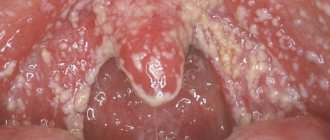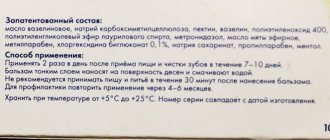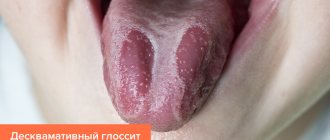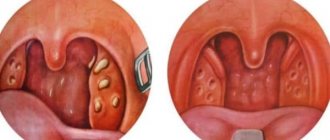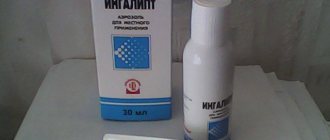What is the drug Fluconazole?
Fluconazole is an antifungal drug. It is used to combat infections caused by various types of fungi. It is an excellent medicine for oral candidiasis and opportunistic infections (in HIV-infected people).
The active ingredient of the drug penetrates the fungal cell and blocks fermentation. This leads to disruption of the transformation of lanosterol into ergosterol, i.e. the process of building the cell membrane changes, as a result of which the fungus can no longer reproduce and gradually dies.
Composition and release form used for children
The pharmaceutical drug has a pronounced antifungal effect, which is provided by the active ingredient fluconazole, which belongs to the largest group of funicides - triazoles. The components of the drug inhibit cell growth, increase the permeability of cell walls and suppress the activity of pathogenic microorganisms, which subsequently leads to their death. In addition to the main component, Fluconazole also contains auxiliary components - potato starch, milk sugar, sodium lauryl sulfuric acid, which act as a filler and stabilizer. For children with thrush, Fluconazole is prescribed in capsules.
Indications for use
Attention! Antifungal therapy can be carried out only after the patient has undergone a complete diagnosis. Self-medication can only worsen the condition of the oral cavity.
The characteristic symptoms that appear in the patient indicate the need for treatment with an antifungal drug:
- redness and swelling of affected tissues;
- white discharge or coating;
- feeling of severe burning or itching.
However, these symptoms may be a manifestation of a completely different disease, so only laboratory diagnostics and a correct diagnosis are the key to quality treatment of oral candidiasis.
There are acute and chronic forms of oral candidiasis. The most common (especially in children) is acute candidiasis. It manifests itself in the form of thrush and affects the mucous membrane of the back of the tongue, cheeks, palate, and lips. During the initial course of the disease, the cheesy coating is easily removed by ordinary scraping.
The chronic form of candidiasis is characterized by the formation of a thick layer of yellow plaque on the tongue and palate. It is quite difficult to remove, because densely welded growths of nodules and plaques are attached to the hyperemic erosive surface.
Fluconazole for children: reviews
For the treatment of oral candidiasis, stomatitis and other diseases caused by fungi, the drug Fluconazole is considered the most effective. According to expert reviews, the drug is often used to eliminate symptoms of similar pathologies in children of all age groups, including newborns. To avoid side effects, it is important to strictly follow the dosage recommended by your doctor and not violate the time interval between doses of the drug.
Fluconazole can be prescribed to a child after long-term antibiotic therapy. For antifungal therapy to be truly effective, it is recommended not to interrupt the course of treatment even if the condition improves.
Composition of the drug and required dosage for the treatment of oral candidiasis
The composition of the drug includes:
- fluconazole (active ingredient);
- lactose;
- povidone;
- croscarmellose sodium;
- talc;
- gelatin;
- potato starch;
- dyes E104, E110.
It goes on sale in the form of tablets and capsules of 50 mg, 100 mg, 150 mg.
The treatment regimen is determined only by a specialist and depends on the general condition of the patient, previous diseases, and the presence of contraindications!
The duration of treatment and dosage for the treatment of oral candidiasis varies significantly. Therapy for adults consists of taking 100 mg capsules for two weeks. Capsules are taken once a day after meals. It is advisable to stick to the same time of taking the medication every day throughout the course.
Inflammation of the oral cavity in children is treated in the following way: the dosage is calculated depending on body weight (1 mg/1 kg). As the disease progresses, the dose of the drug is increased to 3 mg/1 kg.
Is it possible
Modern medicine has thousands of different medicines.
All of them have certain indications and contraindications, methods of use and special instructions. Many drugs are not used in pediatrics and are prohibited until a certain age. There are medications that are prescribed to children, but only to be taken under the supervision of a doctor. Before using any medication, parents have a question about whether it can be given to their child. Today's article will tell you about the drug Fluconazole.
This remedy is prescribed to children, but can it be used? Let's find out the features of the medicine.
Preliminary description
Before answering the question whether Fluconazole can be given to children, it is worth learning more about this medicine. The medication is an antifungal.
It is available in several dosage forms: tablets and solution for injection. The active ingredient of the drug is the compound of the same name – fluconazole. Its quantity may vary.
When purchasing a medicine, always check the dosage you need.
At the pharmacy you can also purchase other drugs with different trade names (analogs). But their active ingredient will be the same compound. You cannot find “Fluconazole” ointment on sale. The price of tablets is 40-100 rubles for 150 mg (1 capsule) and 70-150 rubles for 50 mg (7 capsules). The injection solution costs about 100 rubles per bottle.
To answer this question, you need to refer to the annotation. The instructions for use indicate that the medication is not prescribed to children under 4 years of age. This limitation is explained by insufficient clinical data.
In addition, the drug is available in the form of capsules, which have a high dosage (150 and 50 mg of active ingredient). Many analogues are offered in liquid form.
If the drug “Fluconazole” was produced as a suspension, such treatment would be acceptable for young children.
If it is necessary to use a medicine to treat a child, then analogues are more often selected. You can purchase Diflucan at the pharmacy. It is available in powder form for making syrup.
This medication can be given to a child even from birth. But its cost is quite high: about 700 rubles. You already know that Fluconazole ointment is not produced.
The price for a similar medicine – “Futsis”-gel – will be about 250 rubles.
Indications for use of the medication in children and adults
What does the instruction manual say about the drug Fluconazole? For children, the medication is prescribed for fungal diseases. In the same cases, the medicine is used in adult patients. Indications for use will be the following cases:
- cryptococcal infection (meningitis, damage to the lungs and bronchi, skin);
- generalized candidiasis (with damage to the peritoneum, respiratory tract, urinary and genital areas);
- fungal diseases of the skin, mucous membranes (oral cavity, pharynx, esophagus);
- genital candidiasis;
- mycoses of the skin, nails, feet, scalp;
- endemic mycoses;
- prevention of fungal infections in patients during treatment with antibiotics, chemotherapy and radiation exposure.
Despite the fact that the instructions for use recommend the use of the drug "Fluconazole" for children only from 4 years of age, it can be prescribed by a specialist even earlier if there are appropriate indications. In this case, you need to carefully monitor the child’s response to therapy and, if necessary, adjust the treatment regimen.
Limitations mentioned in the instructions
The drug "Fluconazole" is not prescribed to children under any circumstances if there is hypersensitivity to its components. In this situation, another medicine is chosen, in which the main substance is a different compound. It is contraindicated to use the medication while taking tripenadine.
Caution in use should be observed in case of renal and liver failure, alcoholism and some chronic diseases. It is not recommended to use the drug on your own. Remember that self-medication is not always correct. To choose the right medication and get a positive effect from its use, you need to consult a doctor.
Using the product to treat newborns: is it possible?
Situations when Fluconazole is prescribed to children after birth require special attention. The drug is administered in the form of injections, the speed should be slow.
It is prescribed in a dose of 3 mg per kilogram of the patient’s weight for the treatment of candidiasis of the mucous membranes. If a child is diagnosed with generalized candidiasis or cryptococcal infection, the drug is prescribed in a volume of 6-12 mg per kilogram of the baby’s weight.
The medication is used every 72 hours. For children from 4 weeks of age, the drug is prescribed every 48 hours.
Use of the drug up to 4 years
The medication in tablet form is not recommended for children under 4 years of age. If it is necessary to use it at this age, you should give preference to fluconazole in the drug “Diflucan” (suspension). The dosage depends on the severity of the disease and its type.
For fungal infections of the mucous membranes, organs and tissues, 3-12 mg of fluconazole per kilogram of weight is prescribed. It is known that 5 ml of suspension contains 50 mg of active substance. If a child weighs 10 kilograms, then 30-120 mg of fluconazole per day is indicated. This amount is contained in 3-12 ml of suspension.
If necessary, the portion can be divided into several doses.
Instructions for use: dosage for adults
What does the instructions for use say about the drug "Fluconazole"? For thrush, the drug is prescribed to adults at 150 mg per day for 7-30 days. If we are talking about vaginal candidiasis, then a 150 mg capsule is taken once. As a preventive measure, use one tablet once a month. This therapy can continue for a year.
For the treatment of creptococcal infections, Fluconazole 50 mg, 8 capsules per day, is prescribed. In the future, you can reduce this dose by half. Duration of use is at least a month. For preventive purposes, take Fluconazole 50 mg, 4 capsules per day, for a long time.
For fungal infections of the feet, nails, and hair, use 150 mg of the drug per week or 50 mg daily. Therapy continues for up to 6 weeks. If we are talking about onychomycosis, then the medication is taken until the healthy nail plate grows completely.
Can the medicine harm the fetus? Use of the drug during pregnancy
You already know that the drug “Fluconazole” (tablets) is not prescribed to young children. But can expectant mothers take it? Indeed, in this case, the active substance can penetrate the placental barrier. What do doctors think about this, and what data does the instruction provide?
The annotation states that the medicine for treating fungus is not used during pregnancy. No clinical trials have been conducted in this group of patients.
But if we are talking about dangerous infections that threaten a woman’s life, then the drug is still prescribed (in the second and third trimesters). In this case, the medication is prescribed in minimal doses for a short period of time.
During the treatment period, the expectant mother should be under medical supervision. Doctors also monitor the condition of the unborn child.
What are the risks of treatment?
In most cases, patients tolerate the prescribed drug well. Independent increase in dosage is not allowed. If you follow the recommendations, negative consequences are unlikely. But they are not excluded. Treatment may cause the following side effects:
- allergies (swelling, itching, urticaria);
- digestive disorders (changes in taste, abdominal pain, diarrhea);
- exacerbation of pathologies of the nervous system (headache, convulsions, dizziness);
- renal failure.
Fluconazole for a child
2 years is the age after which doctors prescribe medication without fear. Despite the warnings in the instructions, experts say that the drug will not have a negative effect on the growing body.
It effectively copes with candidiasis and other fungal infections in children. However, doctors do not recommend stopping therapy prematurely. It is necessary to use the drug "Fluconazole" for a strictly prescribed time.
You already know how to take medicine for children. If the drug is prescribed in the form of capsules rather than a Diflucan suspension, then it is permissible to open the gelatin shell. Dilute the contents of the capsule in a tablespoon of water and give the mixture to your child.
Reviews about the drug and useful opinions
What are consumers' opinions about the drug Fluconazole? “The child is 1 year old, and the doctor prescribed a drug,” - mothers often seek help for this reason. Experts say there is nothing criminal in such a recommendation. Many medicines are not intended for use in children.
However, many years of practice show the safety of such treatment. Parents are surprised that Diflucan can be used from the first days of life, while Fluconazole is contraindicated until 4 years of age. At the same time, the active ingredients and even the dosage of these drugs are the same. The only difference is the price.
A medicine approved for use in children costs several times more. What do doctors think about this?
Doctors say that the drug “Diflucan” is a proven one. The manufacturer spent a lot of money on research. The results of the experiments showed that the medication does not cause any harm to the child. It has a positive effect on well-being and effectively eliminates the disease.
However, adverse reactions occur only in isolated cases. All this explains why the drug is more expensive than its Russian counterpart. The drug Fluconazole has not been studied in this way.
Therefore, it is easier for its manufacturer to disclaim responsibility and indicate: “Contraindicated for children under 4 years of age.”
Those parents whose children took the medication as prescribed by a doctor have positive opinions about it. The medicine is inexpensive and can be purchased at any pharmacy. This does not require a prescription from a doctor. The treatment is effective and safe. Fluconazole is most often prescribed for the treatment of oral candidiasis.
It often affects children in their first year of life. The disease manifests itself as restlessness in the baby, the formation of a dense white plaque in the mouth and other symptoms. After using the antifungal medication, my health improved noticeably. The effect is noticeable after just a few days of regular use of the medication.
Finally
From the article you learned about the effective drug Fluconazole. Instructions for use for thrush and other diseases are presented to your attention.
The medication can be used for children, but only as prescribed by a doctor.
All information specified in the instructions is intended for careful study by consumers, but independent use of the medicine to treat children under four years of age is unacceptable.
In pharmacy chains you can find a lot of substitutes for the described medicine. All of them contain the active ingredient fluconazole.
Their trade names are as follows: “Diflucan”, “Flucostat”, “Mikosist”, “Flucosan”, “Tsiskan” and so on. The instructions for use allow children to take some of them from the first days of life.
It is important to continue treatment with the medications described until good research results are obtained. Good health to you!
Source: //FB.ru/article/267451/mojno-li-flukonazol-detyam-instruktsiya-po-primeneniyu-dozirovka-pokazaniya
Contraindications
A distinctive feature of Fluconazole is the absence of serious contraindications and side effects. Patients tolerate the drug well, but in some cases the following may occur:
- nausea;
- headache;
- intestinal dysfunction.
Often, such side effects occur due to improper administration or the presence of contraindications in the patient.
Do not use Fluconazole:
- children under one year old;
- pregnant women;
- persons who are intolerant to the components of the drug.
This drug is not compatible with some medications, so before you start using it, you should definitely consult your doctor.
Video about fluconazole
- Author: Alexandra
General practitioner at a city clinic. Eight years ago I graduated from Tver State Medical University with honors. Rate this article:
- 5
- 4
- 3
- 2
- 1
(7 votes, average: 3.7 out of 5)
Share with your friends!
Taking Fluconazole during pregnancy: doctor's recommendations and warnings
When Fluconazole can cause harm: side effects and contraindications
What other medications can be used to treat
Drugs for the treatment of oral candidiasis have a general systemic interaction on the patient's body. They not only have a detrimental effect on candida in the throat mucosa, but also help cure the spread of the fungus in other organs.
Antimycotics (antifungal drugs), due to their different chemical structures, are divided into:
- Polyene antibiotics (Nystatin, Amphoglucamine).
- Nystatin, for oral candidiasis, is used for two weeks. 4-6 doses every day after meals. To increase the effective result, doctors recommend dissolving the tablets: after just five days, the amount of plaque noticeably decreases and erosion heals. If oral candidiasis does not go away when using Nystatin, then Amphoglucamine capsules are prescribed (2 times a day, 14 days).
- Imidazoles (Miconazole, Clotrimazole).
The course of treatment is 1-3 weeks, 100 mg daily.
At the moment, in addition to Fluconazole, antimicrobial and antiparasitic agents are widely used, such as:
- Diflucan. For oral candidiasis, apply every day, once, for two weeks.
- Nizoral – 200 mg per day, two to three weeks.
To strengthen the immune system and improve the overall tone of the body, a course of vitamins B and C is prescribed, as well as antihistamines to relieve allergy symptoms.
Local treatment involves the use of drugs that are not absorbed into the blood. This could be the well-known brilliant green or iodine. Together with Fluconazole, for oral candidiasis, Lysozyme lozenges are prescribed.
Proper oral hygiene and proper care of dentures are not the last priority when dealing with fungal infection. They, like the oral cavity, are recommended to be treated with iodine or Nystatin ointment.
Fluconazole for stomatitis in children
Fluconazole is primarily used to treat thrush, but it is also effective for stomatitis.
The drug has virtually no contraindications, so it is prescribed not only to adult patients, but also to children.
Of course, before starting therapy, you should definitely consult a doctor so that Fluconazole for stomatitis in children is truly effective.
Fluconazole for stomatitis in children
Children from 3 years old
If we talk about children over 3 years old, then doctors can prescribe Fluconazole to them without any fear.
According to numerous studies, the active components included in the drug do not harm the child’s body.
The duration of the therapeutic course depends not only on the patient’s age, but also on the effectiveness of Fluconazole. You need to take the medicine no more than once a day, and the daily dose should be 400 mg.
Treatment of stomatitis in children over three years of age
In the treatment of stomatitis, Fluconazole is often used as part of complex therapy. It should be used at a dose of 10 mg every day, although the daily dose may be slightly higher. The duration of the therapeutic course is 7 days.
To achieve the maximum therapeutic effect, it is impossible to interrupt the course of treatment with Fluconazole, even if the symptoms of stomatitis in the child disappear.
Otherwise, the disease will reappear and the course of treatment will need to be started all over again.
Note! To ensure the effectiveness of therapy, doctors perform laboratory tests. And if they do not confirm the presence of the causative agent of stomatitis, then there is no need to use medications.
Features of use in children, the elderly and patients with renal failure
What analogues exist
If for one reason or another a child cannot take Fluconazole when diagnosed with stomatitis, then the doctor may prescribe an analogue of this antifungal drug. Fortunately, there are many of them, and all the remedies, while having the same therapeutic effects, differ from each other in their chemical composition. Below are the most common medications prescribed to children.
Comparison of 5 drugs with fluconazole
Table. Review of fluconazole analogue drugs.
Name of the drug, photo Description
| Flucostat | The action of the drug is aimed at destroying pathogenic flora, but healthy microflora remains unaffected. The drug is available in the form of a solution or capsules, but if stomatitis or thrush has been detected in a child, capsules are not prescribed to him. The active ingredient is fluconazole. |
| Diflucan | An effective antifungal drug available in different forms (powder, capsules or even tablets). It is often used in the treatment of fungal pathologies, including stomatitis. The dosage of the drug for adults is 150 mg per day, but for children the dose is not so high - it is determined by the attending physician. |
| Nystatin | An antibacterial drug that negatively affects pathogens, which leads to their death. Nystatin is available in different forms, but tablets are most often used to treat fungal diseases. |
| Mikomax | Another antifungal agent used as an analogue of Fluconazole. The therapeutic effect lies in the destructive effect of the active components of the drug on pathogenic microorganisms. |
| Forkan | An effective antifungal agent used in the treatment of stomatitis not only in adults, but also in children. The therapeutic effect of the drug is achieved due to its negative effect on the activity of fungal enzymes. Forkan is used exclusively orally. The exact dosage and duration of the treatment course are determined by the doctor. |
Before using Fluconazole, be sure to consult your doctor.
Doctors warn patients about possible risks, since almost all drugs that can be purchased at a pharmacy have contraindications for use. Therefore, before using them, be sure to read the instructions. We are talking not only about Fluconazole, but also about other medications that are not recommended to be taken on your own.
– How to get rid of stomatitis in children
Source: https://expertdent.net/lechenie-desen/stomatit/flukonazol-pri-stomatite-u-detey.html
Fungal stomatitis - main manifestations and predisposing factors
This fairly common disease has the following manifestations:
- Pain, burning sensation in the mouth, as well as in the larynx;
- When examining the oral cavity, a white coating is detected, including on the tongue, the mucous membranes under the coating are hyperemic, and if the patient attempts to remove the plaque, the damaged areas begin to bleed;
- Complaints of deterioration in taste perception and an unpleasant (sometimes metallic) taste in the mouth are also common.
Factors predisposing to the development of stomatitis include:
- Insufficient (as well as excessive) oral hygiene;
- Frequent mechanical or thermal damage to the mucous membrane;
- Poor quality or incorrectly installed dentures;
- Immunodeficiencies of various origins;
- Lack of vitamins;
- Fluctuations in hormonal levels.
Features of the pharmacological action of Fluconazole
The active ingredient of the drug suppresses the vital activity of pathogenic and conditionally pathogenic fungi by disrupting the synthesis of cell membrane components. At the same time, Fluconazole practically does not suppress similar enzymatic systems of the human body.
One of the characteristic features of the drug is its ability to penetrate the biological fluids of the body. Its concentration in joint fluid and saliva is the same as in blood plasma, and its content in cerebrospinal fluid is only slightly lower. Thanks to this feature, the drug is also effective against meningitis caused by fungal pathogens.
For stomatitis, taking Fluconazole is justified only in cases where there is precise confidence in its fungal nature ; the drug is ineffective against viral and bacterial pathogens.
Features of fluconazole dosing for stomatitis
The dosage of Fluconazole for stomatitis depends on a number of features of the clinical course of the disease:
- For most patients with stomatitis, Fluconazole is prescribed at a dose of 150 mg once daily, and the duration of such therapy can be up to 2 weeks, and in cases with immunodeficiencies much longer;
- A special case is stomatitis in patients with AIDS. To prevent relapse after the main course of Fluconazole, the drug is prescribed 150 mg once a week;
- For candidal stomatitis caused by wearing dentures, Fluconazole at a dose of 50 mg can also be prescribed. The duration of such treatment is 2 weeks, and simultaneously with Fluconazole it is necessary to treat the prosthesis with antiseptics.
Sources:
Vidal : https://www.vidal.ru/drugs/vero-fluconazole__10369 GRLS : https://grls.rosminzdrav.ru/Grls_View_v2.aspx?routingGu >
Found a mistake? Select it and press Ctrl + Enter
A drug is often used to treat thrush, but sometimes Fluconazole is prescribed for stomatitis. The drug can be used to treat both adult patients and children. Despite the effectiveness of the medication, it also has contraindications for use, which must be taken into account before starting therapy for stomatitis.
How to rinse your mouth and throat for candidiasis?
Special alkali solutions together with disinfectants perfectly cleanse the mucous membrane of plaque and accelerate healing.
Apply:
- two percent solution of baking soda;
- two percent solution of boric acid;
- a mixture of iodine and water;
For oral candidiasis, rinsing with these solutions is carried out after each snack, and also without fail before going to bed. Even if symptoms improve, treatment continues for two weeks.
Drug interactions
Undesirable reactions when taking fluconazole together with other drugs are possible in the form of arrhythmia, allergies, psychomotor effects, diabetic manifestations, and intoxication of the body. There are known cases of the acquisition of blindness. Monitoring is required with the possibility of dose adjustment when treating with fluconazole in combination with the following drugs:
- chlorpropamide, glipizide, glibenclamide, tolbutamide;
- phenytoin;
- cyclosporine;
- warfarin;
- rifampicin, rifabutin;
- erythromycin;
- zidovudine
How to use
As noted earlier, it is not safe to use Fluconazole in children under 3 years of age. This is evidenced by the instructions for use of the drug. Of course, this rule has exceptions, so doctors can prescribe Fluconazole to younger children. But this is only possible if the patient has indications and the treatment regimen is adjusted by the attending physician.
If a child's kidneys or liver are not functioning properly, the body is unable to cope with the active component of the drug, which can lead to serious complications. In such cases, doctors, as a rule, select other medications that are similar in properties to Fluconazole and are not inferior to it in effectiveness.
Children under 3 years old
If a child who is not even 3 years old is diagnosed with stomatitis, then the doctor may prescribe Fluconazole as the main drug, but only in the form of a solution. The dose of the medicine is calculated as follows: per 1 kg of the child’s body weight, 3 mg of solution for infusion is prescribed. But if a severe fungal infection is diagnosed, the dosage may increase to 8-10 mg of medication per 1 kg. The choice of dosage should take into account the individual characteristics of the baby and his general condition.
Analogs
There are other antifungal drugs on the market that are similar in pharmacological properties to fluconazole and are safe in the treatment of fungal infections in children. They are based on different active ingredients - miconazole, bifonazole, nystatin, natamycin, etc. Effective in the treatment of manifestations of childhood fungal infections are:
- Nystatin has a detrimental effect on Candida fungus. Available in the form of tablets, ointments, suppositories. Not recommended for liver diseases, stomach ulcers, pregnancy, and lactation.
- Ketaconazole is effective for mycoses of the nails, hands, feet, various types of candidiasis, histoplasmosis, and similar infections. It is prescribed orally, quickly absorbed into the gastrointestinal tract and excreted from the body.
- Pimafucin is a fungicidal antibiotic. Effective against yeast fungi Candida albicans and other pathogenic infections. Not absorbed into the blood from the gastrointestinal tract, effective against intestinal candidiasis.


